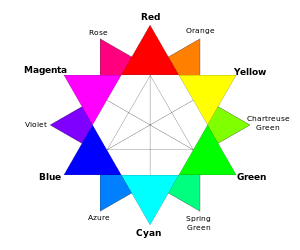Color anomaly
Colour anomaly, sometimes referred to as partial colour blindness, is an inherited condition in which people have full trichromatic colour vision, but do not make the same colour matches as the majority of the human population. It is much more common than dichromacy or other forms of colour blindness, affecting about 6% of human males in Northern European populations[1]. Two forms are common, known as protanomaly and deuteranomaly. In order to match a given spectral yellow light, protanomalous observers need more red light in a red/green mixture than the majority of observers, and deuteranomalous observers need more green. Tritanomaly, affecting mixtures involving blue, is much less common. Colour anomalies can be measured by an instrument called an anomaloscope, in which coloured lights are mixed in a controlled way; typical demonstration anomaloscopes are set up for measuring the red/green anomalies, but with appropriate choices of colours to mix, tritanomaly can also be measured[2].
References
- Deeb, Samir S. (2006). "Genetics of variation in human color vision and the retinal cone mosaic". Current Opinion in Genetics & Development. 16 (3): 301–307. doi:10.1016/j.gde.2006.04.002. PMID 16647849.
- Moreland, J.D.; Kerr, J. (1979). "Optimization of a Rayleigh-type equation for the detection of tritanomaly". Vision Research. 19 (12): 1369–1375. doi:10.1016/0042-6989(79)90209-8. PMID 316945.
